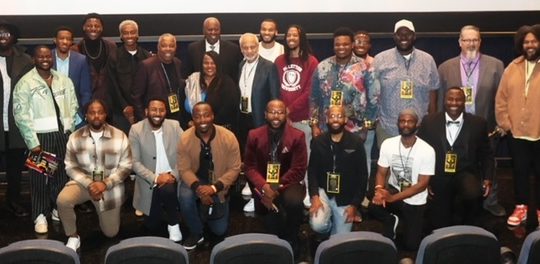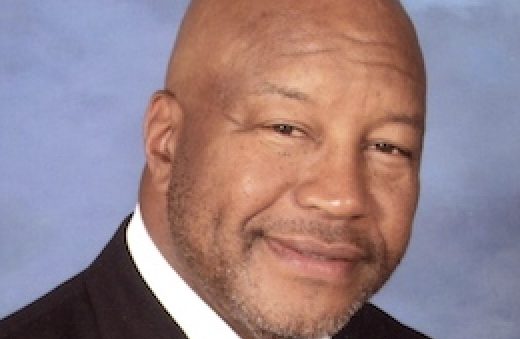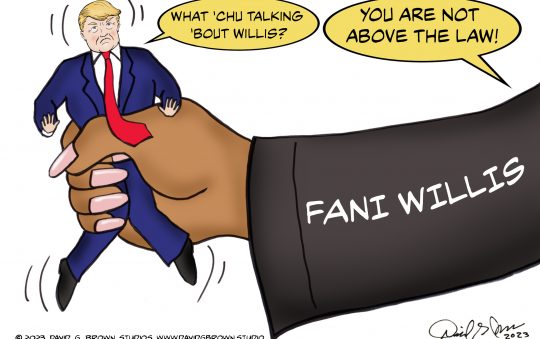 |
| Mayor Richard G. Hatcher |
After the Civil Rights Era of the 1960’s, the historic March on Washington and the passing of some sweeping civil rights laws, several Black mayors of major cities—especially in the industrial North—were elected opening the floodgates of other Black elected officials throughout the nation, including city council-members, aldermen, and school board members. Richard G. Hatcher became the first African-American mayor of Gary, Indiana, and the first in the state of Indiana. He was elected in November 1967 and inaugurated in January 1968. He gained international prominence and was one of the most sought-after spokesmen of that era along with Dr. Martin Luther King Jr. and Rev. Jesse L. Jackson.
He was born Richard Gordon Hatcher on July 10, 1933, in Michigan City, Indiana, the youngest of 13 children to Carlton and Catherine Hatcher. His father worked manufacturing railroad cars for the Pullman Company and his mother was a factory worker. Though born blind in one eye, that never stopped Hatcher from excelling in high school in track and on the football field. His prowess as an athlete earned him an athletic scholarship to Indiana University where he received his bachelor’s degree in business and government in 1956. During his years at Indiana, Hatcher became involved with the NAACP picketing the segregated campus cafeteria.
His activism continued at Valparaiso University School of Law, Indiana, where he helped organize a sit-in at a luncheonette in Michigan City. After earning his law degree in 1959 and passing the Indiana Bar exam, he moved to Gary. Hatcher began practicing law in nearby East Chicago and also became deputy county prosecutor. However, he maintained a keen interest in politics. In the furtherance of his yearning for politics, he helped found a civic, social club in 1962 named Muigwithania (“the Move-ment” in Kenya) with a focus on political activism. The following year he became a city council member and then the city council president. In that capacity, he introduced legislation in housing and civil rights to aid the city’s poor.
As expected, through his legislative successes, Hatcher gained a loyal constituency among Black voters, while undermining entrenched White Democratic interests. His entrance into local politics was a new, “threatening” phenomenon coming on the heels of the massive civil rights protests throughout the nation, civil unrests in urban cities and tremendous television coverage of the struggles Black people were experiencing.
His interest peaked when he challenged the incumbent for the job of mayor of Gary. Hatcher defeated him in the primary and went on to win the general election with 95 percent of the Black vote. (At the same time, Carl Stokes was elected mayor of Cleveland, Ohio). At his inauguration in 1968, Hatcher said, “Gary is a rising sun. Together, we shall beat a way; together we shall turn darkness into light, despair into hope and promise into progress. For God’s sake, for Gary’s sake, let’s get ourselves together.”
Gary escaped the wrath of massive civil unrest in the wake of Dr. King’s assassination five months after Hatcher’s election. Nonetheless, like the rest of the country, Hatcher and Gary mourned the tragic loss and used the tragedy to translate some of King’s legacy into political reality. Hatcher would sometimes speak on the same program alongside Dr. King.
Hatcher served an unprecedented five terms and as one of the beneficiaries of the Civil Rights Movement, he set the tone and was used (particularly by the White establishment) as the standard by which many “big city” Black mayors, who came after him, throughout the nation, were evaluated … or criticized. Hatcher broke the racial glass ceiling for a host of Black mayors who followed him (and Stokes). During his tenure, there were “peaks and valleys.” His accomplishments were highlighted—especially by Black people—and his missteps were also highlighted—especially by White people—some who wanted him to fail.
His tenure as mayor was known as the Hatcher Era and his administration developed innovative ways to combat an array of urban problems from the high unemployment rate of young Blacks to civil rights issues. He became the executive director of the NAACP and that strengthen his position in dealing with the city’s civil rights issues. More so, Hatcher was able to export many of his successes to other urban cities that were faced with similar issues—especially those cities with Black mayors.
There was a tendency by his party’s political machine (the Democratic Party) to support Hatcher’s opponents even though they might be Republicans. These actions forced him to rely heavily on his Black constituency to continue as an effective mayor and at the same time it was used to typecast him a racially polarizing figure. However, Hatcher pursued a course that encouraged Black businesses which in the end, attracted outside government and private capital in a progressive win-win situation for all the parties involved.
In 1976, Hatcher married Ruthellyn M. Rowles; they had three children: Ragen Heather, Rachelle Catherine and Renee Camille. There was never any report that his personal life interrupted, or in any way negatively affected his performance as mayor of Gary. To the contrary, his mayoral duties appear to have benefitted after he took on his role as the city’s first husband.
After the “turbulent” 1960’s and the rise in the number of Black elected officials in many major (and minor) urban areas, there was a mass exodus of Whites who headed for suburbia America. Gary was no exception. As part of the industrial North, the rapid decline in the steel industry added to the city’s woes as jobs and revenue went with that decline. Many Blacks who had prospered during the good times now faced daunting, uncertain futures, and they blamed Hatcher. The loss of businesses and the increase in crime followed. It was the start of urban decay from which Gary since has never fully recovered.
When Rev. Jackson ran for president in 1984, Hatcher became his campaign chairman. Because of the dwindling prospects for Gary’s residents—the many Blacks and the few Whites—Hatcher’s attempt to seek a sixth term was unsuccessful. He was defeated in November 1987 and left office the following January. He then served as an advisor to Rev. Jackson’s 1988 presidential campaign.
After he left public office, Hatcher started a consulting firm, R. Gordon Hatcher & Associates in addition, he worked at Harvard University’s Kennedy School of Government. According to reports, he taught political science at his alma mater, Valparaiso University, but because of the natural tendency to do less as age advances his extra curricular activities were curtailed. At 75, Hatcher’s career has included numerous awards and memberships in the National Civil Rights Museum and Hall of Fame and the board of directors, Marshall University Society of Yeager Scholars.
He has also been an adjunct professor of African American Studies at Indiana University Northwest which houses Calumet Regional Archives that consists of the Richard Hatcher Collection. The collection traces Hatcher’s career as mayor of Gary, photographs, his landmark victories, campaign material, his inaugural ball and speeches highlighting his political views and social activities.
He has been a successful politician, social activist and an educator.
“Legends” is the brainchild of Danny J. Bakewell Sr., executive publisher of the Los Angeles Sentinel. Every week it will highlight the accomplishments of African Americans and Africans.






